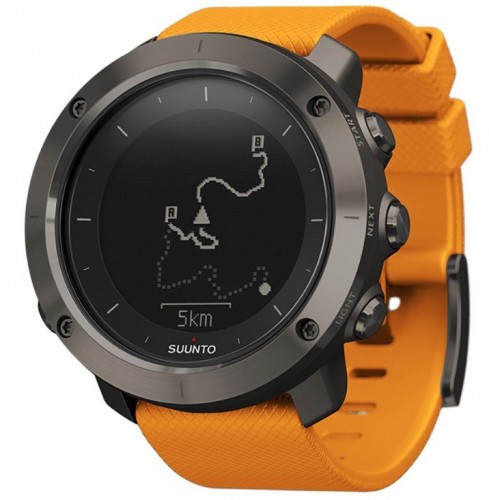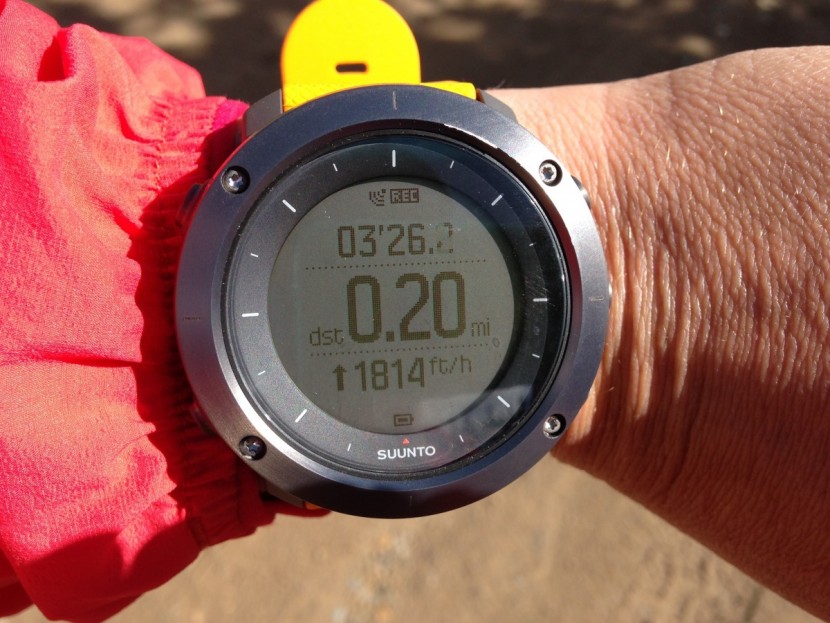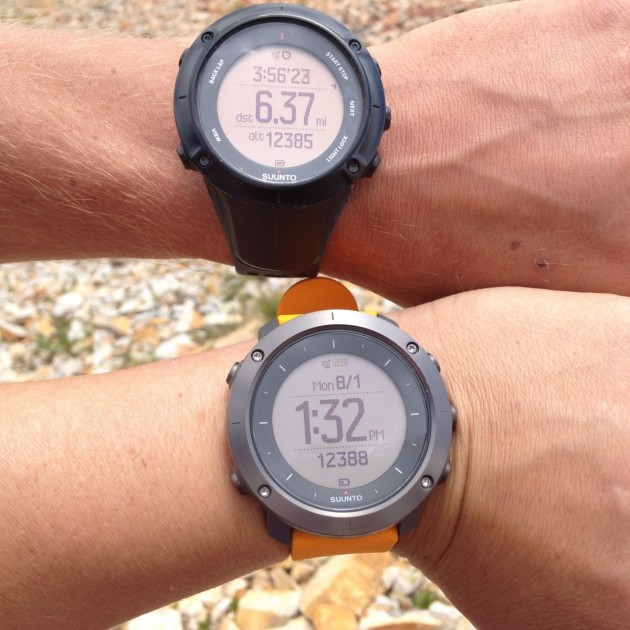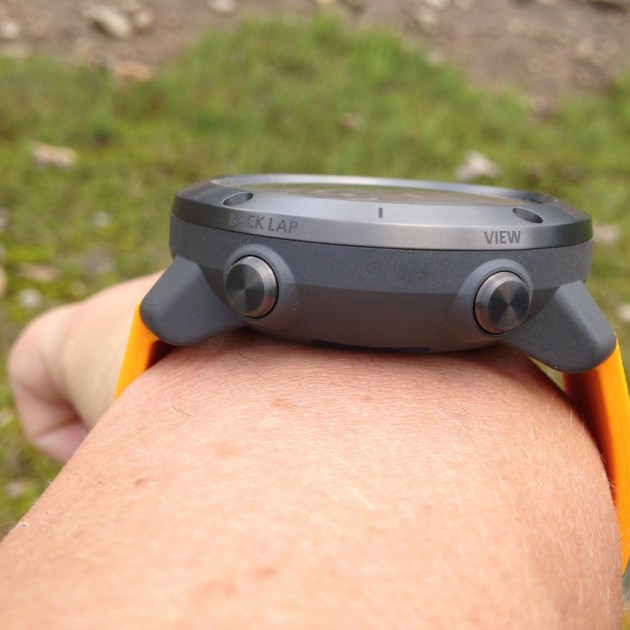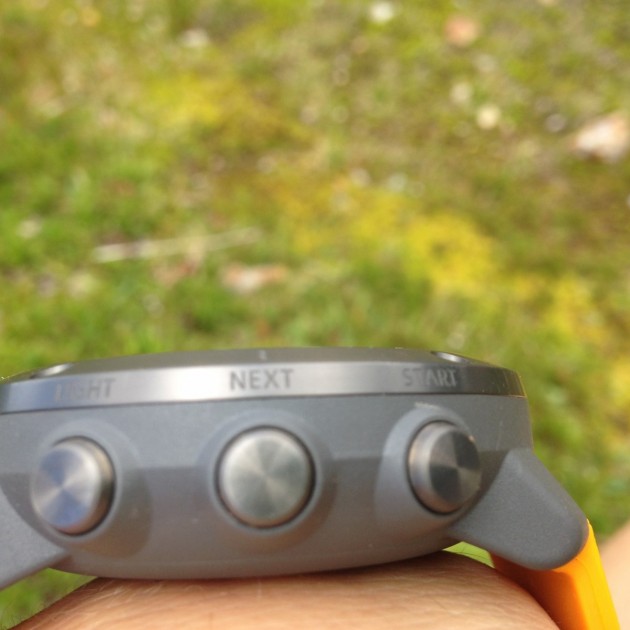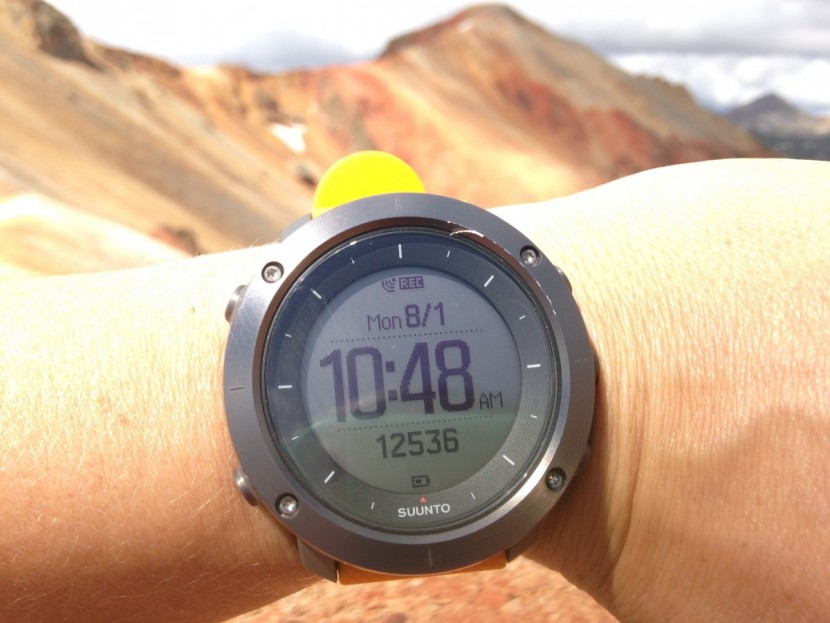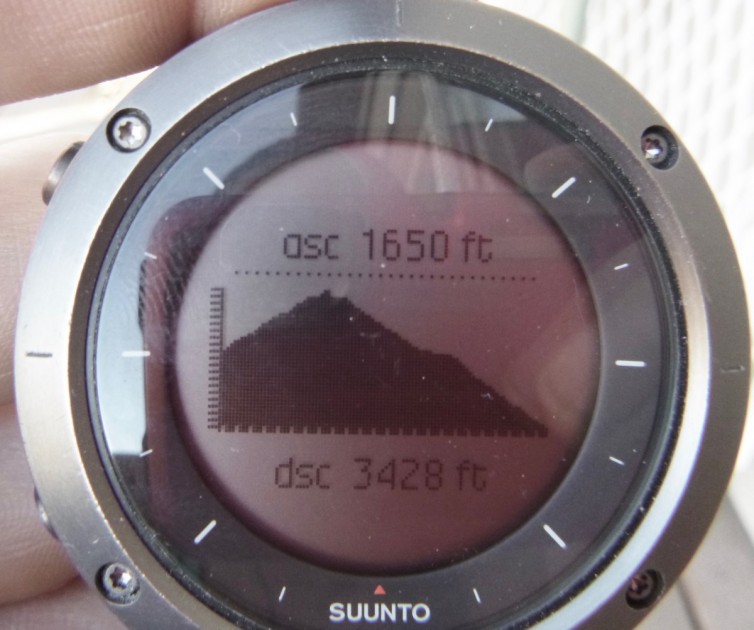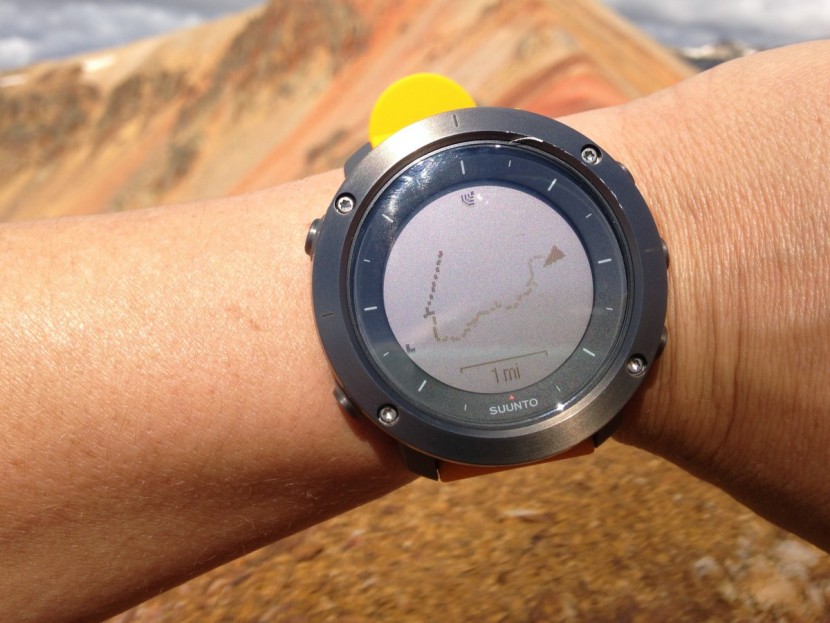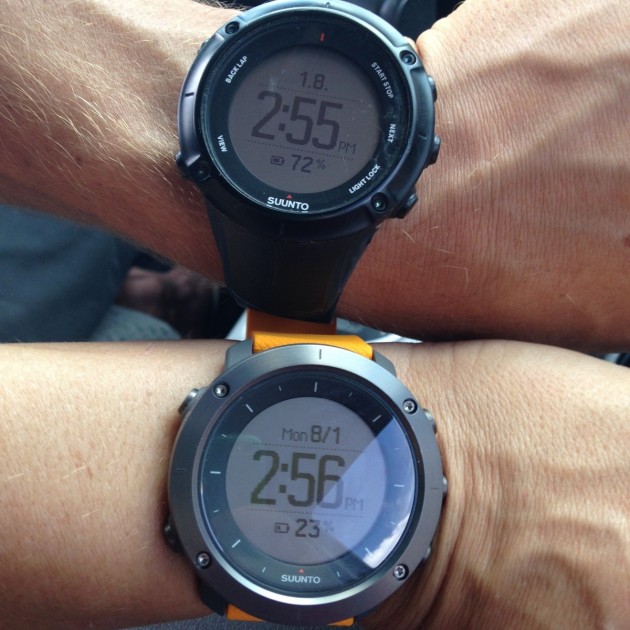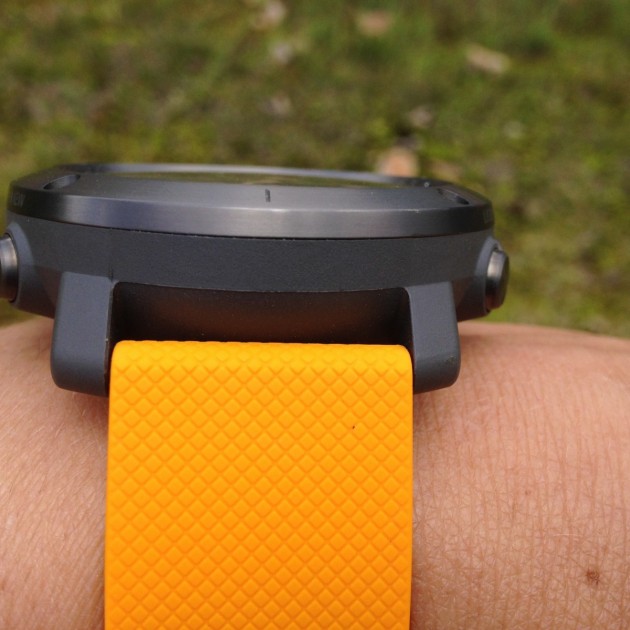Suunto Traverse Review
Our Verdict
Our Analysis and Test Results
The Traverse is a GPS-enable altimeter watch that can also track routes, log data, and monitor fitness. Take it with you on short adventures.
Altimeter Accuracy
We like the FusedAlti function, which provided relatively accurate readings. In our altimeter accuracy tests hiking over 10,000 vertical feet, we learned that accuracy varied day-to-day with this watch. The Core and Ambit3 Peak provide more reliable readings and are consistently more precise. The Traverse was also fairly accurate, being off only by 50 to 500 feet with regular calibrations. That said, we still recommend this watch as the altimeter is quite accurate and will help you get where you're going. Just make sure to calibrate it regularly.
Battery Life
To be blunt, the battery life in the Traverse is really poor compared to the rest of the GPS watches that we tested. Using regular settings (a GPS point every 60 seconds) we found that the battery life only lasts about eight hours. In comparison, the Suunto Ambit3 Peak lasts almost twice as long. Additionally, even when not using the GPS, the watch lasts just two weeks. Unfortunately, this limits the use of this model drastically. As a result, it earned one of our lowest scores for battery life.
User Experience
Of all the watches tested, this is one of the easier ones to figure out. The menu and interface are the same as the Suunto Ambit3 Peak, but it has fewer features.
We found that the buttons weren't as easy to press as on the other GPS watches tested because they are flat on the ends instead of convex. That said, it was still easy to use the buttons with a pair of gloves.
The large mineral glass display is easy to see, and the screen features large fonts. The color display can be inverted, and the contrast can be adjusted, which is great for viewing during both day and night. The backlight has three features for night-time use: normal, night, and toggle. In addition, this was the only watch to feature a flashlight mode that kept the display on at its maximum brightness until you turned it off. We like this for getting something out of our pack when a headlamp wasn't at hand. Overall, we are impressed with the display quality.
Features
This contender features many great altitude and barometric features. In addition to the traditional features of an altimeter watch (altimeter, barometer, compass, timekeeper, temperature), it also features many GPS-enabled options. You can track fitness patterns, navigate to selected points, create waypoints and points of interest, and much more. We liked the plethora of features with the Traverse. However, the Suunto Ambit3 Peak features all of these options and more.
Altimeter & Barometer
Similar to other Suunto watches, the altimeter and barometer are tied together. There are three altimeter-barometer profiles you can choose from that include automatic, altimeter, and barometer. If the automatic profile is selected, it can flip between the barometer and altimeter profile based on your motion. If you're moving uphill or down, it will go to altimeter mode. If you aren't moving, it will switch to the barometric pressure graph.
This FusedAlti technology is a handy feature that calibrates using both sea pressure and the GPS function. Also, the barometric graph plots points to show either a rise or fall in barometric pressure. This can help determine weather patterns and show whether or not a storm is moving in or out of your area.
The profiles generated for the altimeter and barometer don't compare to the Garmin Fenix 5x Plus Sapphire, which includes crisp, clear color graphs. In addition, this watch comes with a storm alert that will go off when there is a drop of 2 hPa (0.59 inHg) over three hours. In our experience the alarm does work, but it's not always accurate at predicting whether or not there is, in fact, a storm on the way.
Another feature we like is the data log and the trip summary. It shows total ascent and descent, and also shows the speed at which you are ascending or descending if the GPS is turned on. When looking back at past logged events, it doesn't contain nearly the amount of data that you find with the Suunto Ambit3 Peak. However, we did like that it showed a summary profile of the altitude gain and loss.
Compass
The digital compass is tilt-compensated and provides you with a cardinal direction and reference to true north. Like other watches tested, you can manually calibrate the declination, and it also features a nifty bearing lock. All of the features are similar to other GPS watches.
Timekeeper
Like all altimeter watches, the Traverse also features classic timekeeping functions. It has a countdown timer, stopwatch, one daily alarm, GPS time, and daylight savings time options. If you're in the market for a watch that has more alarms, check out the Casio options.
GPS
Of all the GPS watches tested, this has the fewest number of features. Though this watch is engineered to be a fitness tracker, it has some other handy navigational features as well — enough to keep you up to date on fitness tracking. In addition, like other GPS watches, it features both GPS and GLONASS networks for a better signal and accuracy.
- Find back features help guide you back to your starting point where the first GPS fix was established.
- Point of Interest (POI) icons that you can choose with your log. You can navigate back to these POIs, and they can be used while stationary or moving.
- Check your coordinates.
- Create routes with a route planner in the Suunto Movescount app and navigate those routes.
- Logbook: shows the type of activity, distances, speed, and more.
- Change map orientation.
- A real-time navigational map is created to show your basic location.
- Change GPS accuracy options to save battery life or get a more precise track: 1 sec (high), 5 sec (good), 60 sec (okay), none
In addition, this watch has many activity monitoring functions such as daily steps, calories burned (that is reset at midnight), 30-day step history (and yearly trends), and specific activity profiles (i.e., hiking, running, swimming, biking, etc.).
Comfort and Fit
Even though this watch features a slim watch face and silicon watch band design that fits nicely around the wrist and over and under clothing, we did not like wearing it when it was hot outside. Unlike all the other bands tested, this one only features watch holes on one side of the band.
While hiking in the heat with the watch against our skin, we learned that the lack of holes made our wrist sweaty and itchy. In addition, the band does not have the ergonomic insert like the Suunto Ambit3 Peak or the Suunto Core Alu. Instead, it feels floppy.
Value
At a price of $419, we think it's a decent value, especially since you can find it on sale at a variety of dealers. However, we think the Suunto Ambit3 Peak has almost all of the same features of the Traverse with a much longer battery life, is worth the slightly greater premium.
Conclusion
The Traverse is a GPS fitness trainer with a built-in altimeter and barometer. It has all the basic features of an altimeter watch, but the battery life is quite poor. If you're looking for a GPS watch, we'd recommend instead looking at the Suunto Ambit3 Peak that has all the same features, better battery life, and greater comfort.


